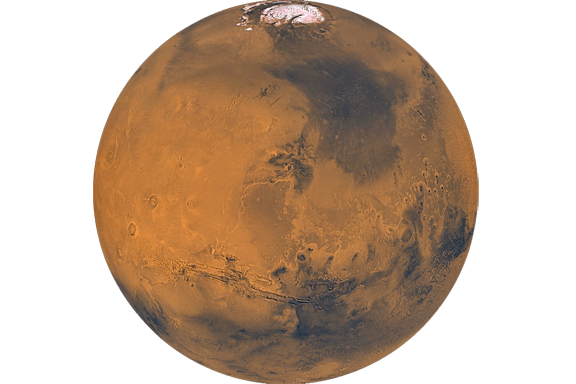
Many mysteries of Mars still remain unsolved, and among them are the atmospheric winds and their impact on the Martian climate.
Gaps in knowledge persist, in part, due to severe limitations in space technology. For instance, the surface winds of Mars have been measured in only a few locations by rovers, making it difficult to identify safe landing places. Even scientists who study dust storms, dune migrations and temperature changes on Mars say their weather models could be in error by as much as 100 percent, creating more doubt than certainty.

Draper is addressing this challenge by co-leading a research mission with NASA’s Ames Research Center and Arizona State University to understand daily climate variability and the global energy balance on Mars. The mission consists of a single, smallsat in an inclined polar orbit, allowing the cubesat to pass over all local times, with the baseline mission of observing the seasons and diurnal variability over an entire Martian year, which is equivalent to two Earth years. The smallsat measures approximately 20x30x40cm, about the size of a mini refrigerator.
The spacecraft, known as Aeolus, is one of 10 mission concepts intended to study solar system planets and asteroids selected by NASA’s Science Mission Directorate under its Planetary Science Deep Space SmallSat (PSDS3) program. The program aims to develop a small satellite strategy, with the goal of identifying high-priority science objectives which can be addressed with CubeSats and SmallSats flying as secondary payloads on deep space missions.
Aeolus will feature science instruments from all three organizations. Draper will provide a stack of four near-infrared Spatial Heterodyne Spectrometers fed by two orthogonal telescopes. Arizona State University will equip the satellite with its Mini-TES: Miniaturized Thermal Emission Spectrometer, and NASA’s Ames Research Center (ARC) will provide its SuRSeP: Surface Radiometric Sensor Package.
By the end of the multi-year mission, Aeolus researchers hope to have a new understanding of the global energy balance, dust transport processes and climate cycles in the Martian atmosphere. During the mission, Aeolus will fly over Mars equipped with measuring instruments including spectrometers for reading surface temperatures, telescopes to capture wind velocities and sensors for measuring the amount of light reflected by the planet.
Aeolus would potentially launch as a secondary payload on the Mars 2022 spacecraft, which is currently planned for a low Mars orbit. The 24U CubeSat will help scientists determine the global energy balance at Mars and understand daily climate variability, according to Anthony Colaprete, Aeolus principal investigator and project scientist at NASA’s Ames Research Center in California’s Silicon Valley. “Aeolus would provide unique science, never before measured wind velocities and how the planet’s energy balance changes over the Martian year and as a function of time of day,” added Dr. Colaprete.
“Without a clearer understanding of the climate on Mars, the goal of human exploration of the red planet is out of reach,” said David Landis, Aeolus co-investigator and senior program manager for space science instrumentation at Draper. “If we are serious about someday exploring Mars, then we need to understand the atmosphere, climate and energy balance in much better detail. This is the goal of the Draper-NASA Ames-ASU experiments.”

